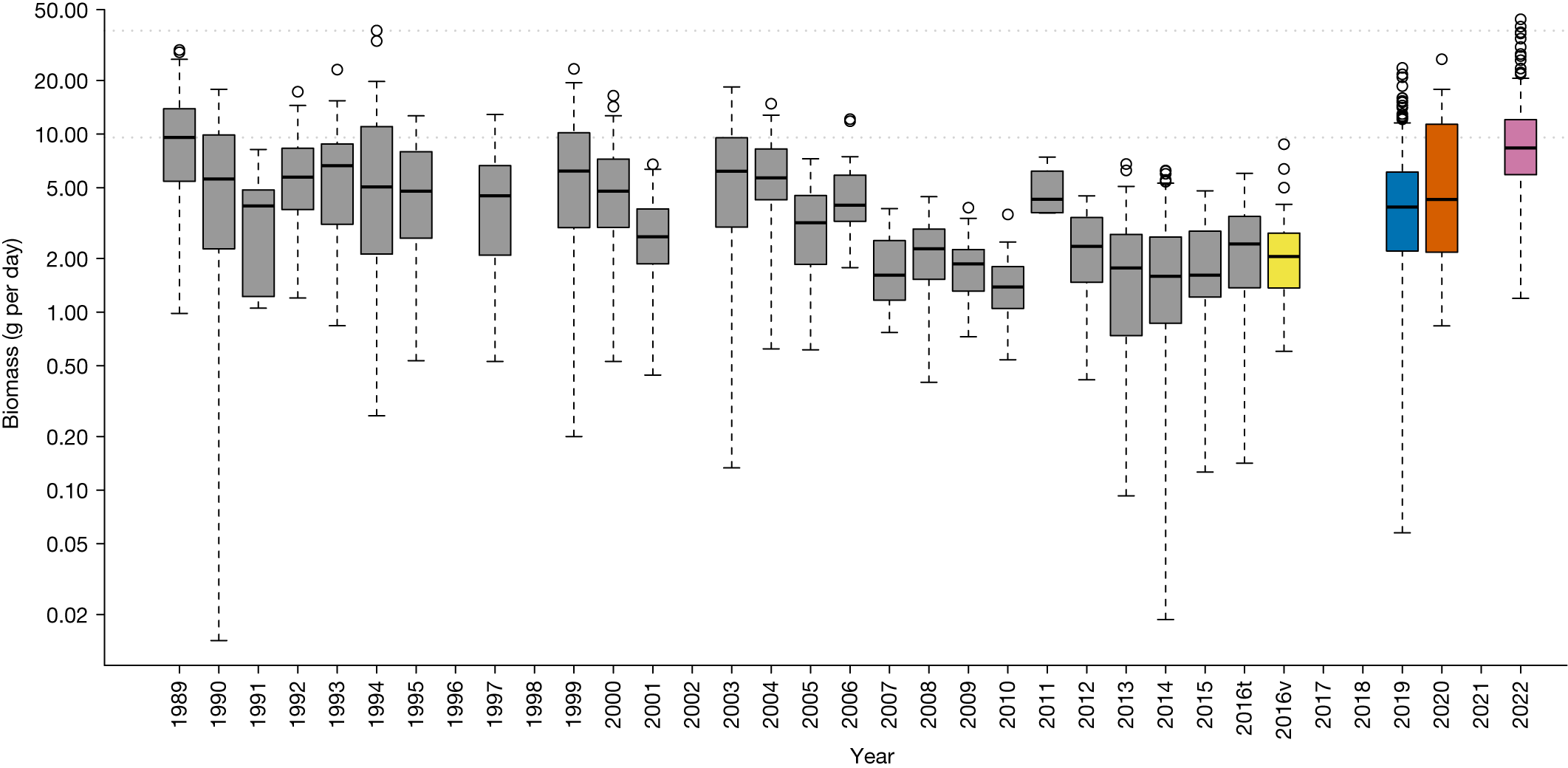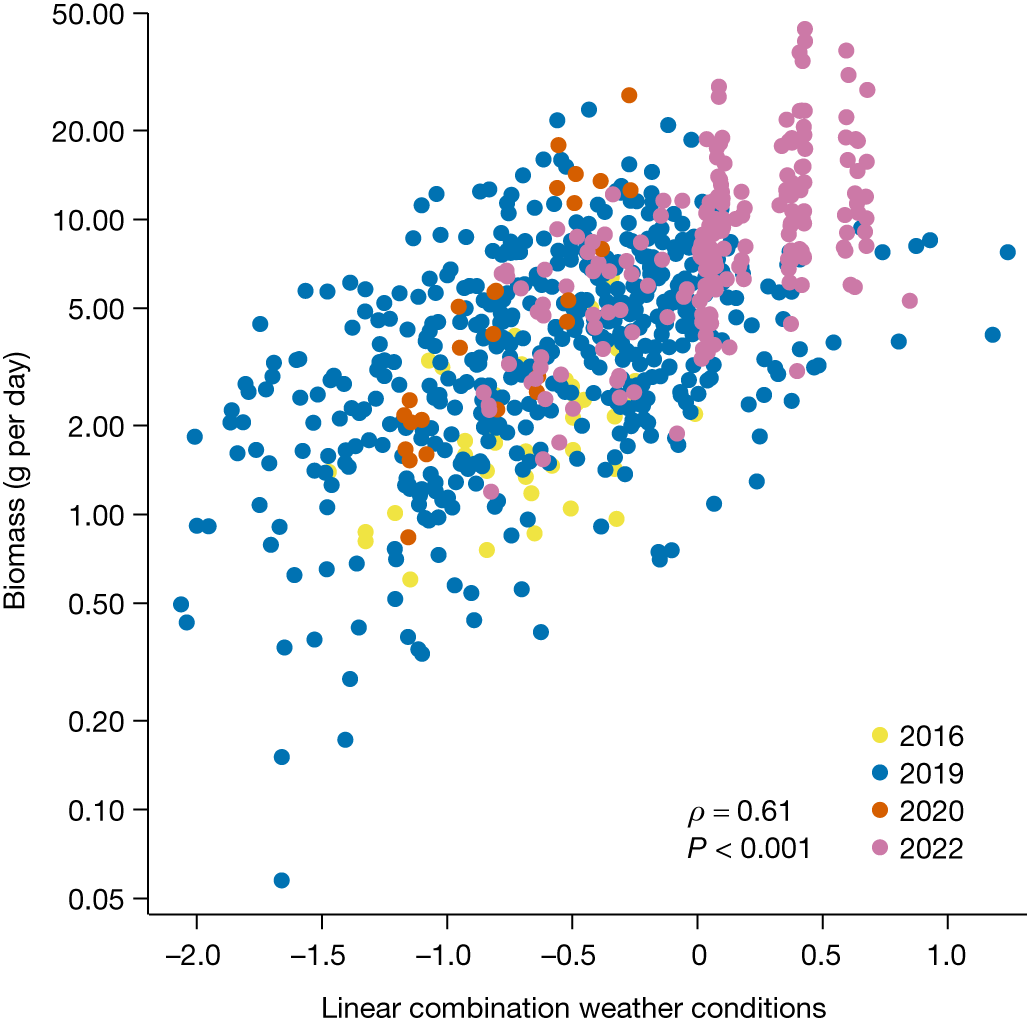Science
Related: About this forumWeather explains the decline and rise of insect biomass over 34 years.
As most of us here aware, the weather has been grotesquely destabilized by climate change.
It's going to get worse, much worse, faster, because of all the denial and the equivalent of denial, wishful thinking (cf. Ennui and Excuses, E&E.)
There has been coverage in the media on the decline of insect biomass as referenced in the intro of this paper:
Müller, J., Hothorn, T., Yuan, Y. et al. Weather explains the decline and rise of insect biomass over 34 years. Nature (2023).
A pivotal study, which received wide media coverage and triggered much of the continuing public and political debate about ‘insect declines’, reported that insect biomass in protected areas in Germany declined by more than 75% between 1989 and 2016 (ref. 1). Subsequent studies using systematic monitoring3 and national to global meta-analyses on insect biomass, abundances and diversity indicate a more complex pattern across realms, regions and taxa2,11. Most severe declines in terrestrial insect abundance were reported, for example, in Central Europe and the US Midwest, supporting the view that land use intensification is a main driver2. However, in a well-replicated study in Central Europe, no difference in insect biomass between intensive agricultural and seminatural environments could be found, despite reduced species richness, particularly for threatened species in agricultural environments12. Proposed drivers of insect declines in descending order of perceived importance are: (1) habitat loss and conversion to intensive agriculture and urbanization; (2) pollution, especially from synthetic pesticides and fertilizers; (3) biological factors, including pathogens and introduced species; and (4) climate change13. More recently climate change and its interaction with habitat loss has received more attention5,7.
Climate change is assumed to be especially important for changes in biodiversity in tropical and Mediterranean as well as in arctic and alpine regions5,6,7. Several new studies point to climate change as a potentially important driver of insect declines. In wet tropical forests, wet and dry extremes related to climate change have been shown to reduce arthropod biomass14. Similarly, declines in arthropod biomass in lowland rainforests of Puerto Rico between the 1970s and the 2010s have been proposed to be a result of climate change, with synchronous declines at higher trophic levels, including lizards, birds and frogs15. Yet further other explanations, especially habitat change due to disturbance or insufficient focus on temperature related aspects of weather16 may suggest our evidence for climate change effects on insects is incomplete. In the Arctic region, long-term data show that weather conditions during different periods of the year cause complex and nonlinear responses of arthropod abundance and biodiversity17. In their recent review, leading scientists expressed their concerns by summarizing the many reasons why climate change might be critical for insect populations7.
Most studies have analysed potential climate effects on insects only at a coarse scale, such as mean temperatures during the flight season of insects or during the winter season1,3,5. Insect populations, however, are influenced by temperature and precipitation at various stages during their life cycle and by means of different mechanisms7,18. For example, the number of eggs laid varies on the conditions experienced by females in the previous season, the survival of individuals depends on winter conditions and last weather conditions during spring and summer determine final insect densities. To understand the role of weather and climate change in insect population trends, more comprehensive studies are needed that include data on weather conditions relevant for different life stages of insects together with experiments disentangling confounding drivers to address the question of how climate is influencing insect biomass in the long term...
The authors utilized "Malaise traps" to estimate the density of insect biomass, and correlated the effects statistically with weather patterns.
A graphic from the paper:

The caption:
A correlation graphic:

An aside: The authors are from Germany, a country that has shown contempt for climate change, by destroying perfectly operable climate change gas free energy infrastructure and substituted coal for it.
Enjoy the upcoming weekend.
CrispyQ
(38,639 posts)We had such a beautiful planet and we're devouring it like locusts for the profit of a few but hey we have big brains.
I didn't know that about Germany.
geardaddy
(25,372 posts)Who knows why. I voted to leave it.
Thank you for sharing this important information.
NNadir
(34,876 posts)I get notes like this, most often in PM, from time to time.